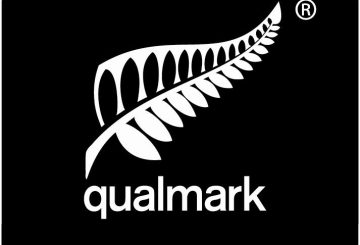Covid-19 应对部长克里斯·希普金斯(Chris Hipkins)宣布,大多数进入新西兰且已完全接种疫苗的旅行者将不再需要进入管理隔离。
新西兰公民在 2022 年 1 月 16 日之后无需隔离,只要他们已完全接种疫苗,就可以从澳大利亚出发。但是,强制性的 7 天自我隔离期仍然存在。
符合条件的旅客[New Zealand citizens who are fully vaccinated]可以在 2022 年 2 月 13 日之后从所有其他国家/地区进入新西兰。
从 2022 年 4 月 30 日起,前往其他国家/地区的外国旅客如果完全接种疫苗,将能够进入新西兰。
希普金斯说,国际旅行将有所不同,新西兰已经可以开始恢复正常。
虽然旅客需要在出发前进行阴性检测,但必须完全接种疫苗,这是完整旅行历史的声明。他们将在抵达时和自我隔离期结束时再次接受测试。
希普金斯说:“即使是已经接种过疫苗的人,也会有更多的病例越过边境。”“快速抗原检测将在我们的监测测试程序中发挥越来越重要的作用。”
在使用快速抗原检测方面,新西兰将跟随世界其他地区。
“今天的公告并不意味着 MIQ 作为一个系统不会很快结束。MIQ 旨在作为一项临时措施,其当前的规模和运作方式为我们提供了令人难以置信的良好服务。”
- 区域
-
- New Zealand Regions
- Hawke's Bay
- Bay of Plenty
- Waikato
- Whanganui
- Manawatu
- Northland
- Auckland
- Gisborne
- Taranaki
- Wellington
- West Coast
- Nelson
- Canterbury
- Otago
- Marlborough
- Southland
Hawke's Bay
View HomepageBeaches, wineries and Art Deco. The Hawke's Bay has a diverse economy, including business services that support its sectors to be the second largest contributor to regional GDP in the country. A popular tourist destination, the region has some of the countries best restaurants as well as stunning scenery, markets and festivals.
Districts
HastingsNapier


Bay of Plenty
View HomepageThe Bay of Plenty is officially New Zealand's sunniest destination, enjoying short-lived winters and long summer days. The Region offers some of the country's most spectacular views and many ways to enjoy the pristine scenery and natural wonders. Visitors also enjoy exploring the Bay's Māori heritage and pre-European roots.
Districts
OpotikiOpotiki iSiteKawerauWhakatane


Waikato
View HomepageThe Waikato is known for its rolling plains, fertile land and the mighty Waikato River. The region is the fourth largest regional economy in New Zealand, with a strong focus on primary production and associated manufacturing.
Districts
South WaikatoWaikato District


Whanganui
View HomepageWelcome to Whanganui. This is our place; where history is full of stories, legends and rich legacy. Where a thriving arts scene, creativity and evolving culture inspire our modern lives. Where breath-taking natural landscapes capture imaginations at every turn.



Manawatu
View HomepageLocated in the lower North Island, Manawatu is heartland New Zealand, offering an authentic Kiwi experience.
The main in the region are Palmerston North, most notable for Massey University. Palmerston has a vibrant, arts and culture scene.
The region's economy is based on food production and processing, research and education. The region is also home for the New Zealand defence force.



Northland
View HomepageNorthland was originally home to some of our country's first human inhabitants. Today, it is one of the fastest growing regions in New Zealand and home to nearly 189,000 people. Rich in culture and history, the region boasts a stunning natural environment.



Auckland
View HomepageAuckland Region stretches from the the beaches of the Pacific Ocean in the east to the expansive beaches of the rugged west coast of the Tasman Sea. Auckland City, the largest urban area in New Zealand is considered the main economic center of New Zealand and a popular destination for international students and travellers.



Gisborne
View HomepageGisborne is a Region on the east coast of New Zealand's North Island. It's known for wineries and surf beaches such as Makorori. The region has maintained a strong Maori heritage. The region's economy is made up mainly of agriculture, horticulture and forestry.



Taranaki
View HomepageTaranaki is a coastal and mountainous region on the western side of New Zealand's North Island. Its landscape is dominated by Mount Taranaki, its namesake volcano, which lies within the rainforested Egmont National Park.
The port city of New Plymouth is the area's cultural and commercial hub. Taranaki's economy is diverse and includes dairy, oil and gas. The region is the highest contributor or national GDP per capita.



Wellington
View HomepageThe Wellington Region covers Wellington city in the south, Upper and Lower Hutt valleys to the north-east, and Porirua to the north-west. The region takes its name from Wellington, New Zealand's capital city.
Wellington is famous for its arts and culture scene and is also the centre of New Zealand's film industry.



West Coast
View HomepageThe West Coast, or as some locals call it, the "Wild West", is a long thin region that runs down the South Island's west coast.
The region has the lowest population in all of New Zealand. It is famous for its rugged natural scenery such as the Pancake Rocks, the Blue Pools of Haast, and the glaciers.
The main industries in the region are dairy farming and mining. Tourism also plays an important role.



Nelson – Tasman
View HomepageNelson Tasman is an extraordinary, vibrant region where art and businesses thrive together among a stunning natural landscape. With one in five people internationally born, Nelson Tasman has 48 different cultures living in its environs.
The region prides its self on being New Zealand’s leading Research and Development areas, with the highest proportion of people working in the research, science and tech sectors out of anywhere in New Zealand.



Canterbury
View HomepageCanterbury is a region on New Zealand’s South Island marked by grassy plains, clear lakes and snow-capped mountains. Its largest city, Christchurch, is famed for its art scene and green spaces.



Otago
View HomepageThere are few places in the world which will leave you with a lasting sense of difference. Central Otago is undoubtedly one of them from its landscapes, its seasons, its people, its products and experiences.



Marlborough
View HomepageMarlborough Region is on the north-eastern corner of the South Island. The region is well known for its winemaking industry, and the Marlborough Sounds, an extensive network of coastal waterways, peninsulas and islands.
Apart from the wine industry, aquaculture, agriculture and tourism play an important role in the local economy.



Southland
View HomepageSouthland is New Zealand’s most southerly region and includes the World Heritage ranked Fiordland National Park.
The region's only city Invercargill offers a relaxed pace of life with wide streets, little traffic, spacious parks and gardens, striking Victorian and Edwardian architecture and impressive sporting facilities including New Zealand’s first indoor velodrome. Southland's location is such that views of Aurora Australis or the Southern Lights are common.


 Tooltip
Tooltip
-
- 区域
- 研究
- 直播
- 参观
- 店铺
- 目录
- 账户
- 简体中文




























































